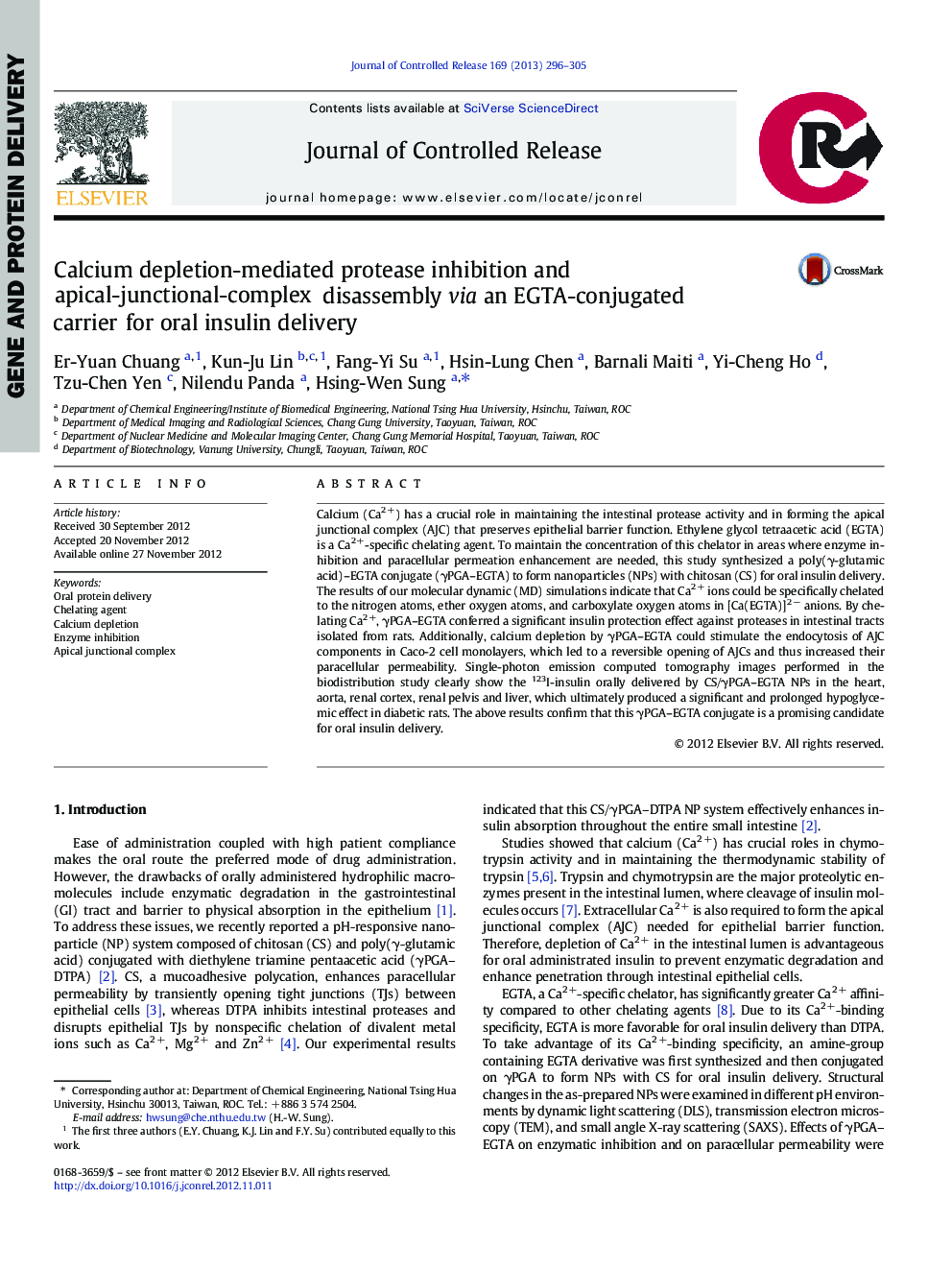| Article ID | Journal | Published Year | Pages | File Type |
|---|---|---|---|---|
| 1424168 | Journal of Controlled Release | 2013 | 10 Pages |
Calcium (Ca2 +) has a crucial role in maintaining the intestinal protease activity and in forming the apical junctional complex (AJC) that preserves epithelial barrier function. Ethylene glycol tetraacetic acid (EGTA) is a Ca2 +-specific chelating agent. To maintain the concentration of this chelator in areas where enzyme inhibition and paracellular permeation enhancement are needed, this study synthesized a poly(γ-glutamic acid)–EGTA conjugate (γPGA–EGTA) to form nanoparticles (NPs) with chitosan (CS) for oral insulin delivery. The results of our molecular dynamic (MD) simulations indicate that Ca2 + ions could be specifically chelated to the nitrogen atoms, ether oxygen atoms, and carboxylate oxygen atoms in [Ca(EGTA)]2 − anions. By chelating Ca2 +, γPGA–EGTA conferred a significant insulin protection effect against proteases in intestinal tracts isolated from rats. Additionally, calcium depletion by γPGA–EGTA could stimulate the endocytosis of AJC components in Caco-2 cell monolayers, which led to a reversible opening of AJCs and thus increased their paracellular permeability. Single-photon emission computed tomography images performed in the biodistribution study clearly show the 123I-insulin orally delivered by CS/γPGA–EGTA NPs in the heart, aorta, renal cortex, renal pelvis and liver, which ultimately produced a significant and prolonged hypoglycemic effect in diabetic rats. The above results confirm that this γPGA–EGTA conjugate is a promising candidate for oral insulin delivery.
Graphical abstractFigure optionsDownload full-size imageDownload high-quality image (431 K)Download as PowerPoint slide
